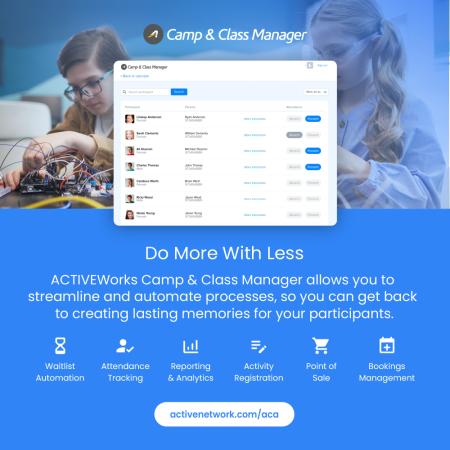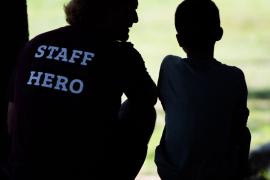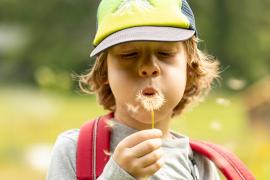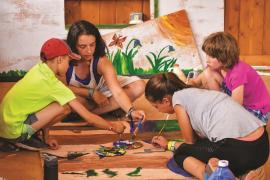At its best, summer camp is a silly, spirited place. A place where the group who cooks the best outdoor meal wins a metal spoon that has been spray-painted gold (the golden spoon! ooooh, aaaaah); where the actors starring as mosquitos in the campfire skit wear brightly colored tutus; where the song “Chariots of Fire” plays during the Olympic torch (candlestick) relay while the racers run in slow-motion.
Camp works best when both the campers and you, the staff, embrace this zaniness. Then the flame of camp spirit burns brightly.
But camp is also a serious, even sacred, place where campers reflect on who they are and meet and accept other people for who they are; where they shoot arrows at real archery targets; and where they can climb a mountain they’ve only seen from a distance.
Summer camp can be glorious, life-changing, and fun. But it can also end up being mediocre. So what is it, exactly, that separates a great camp from a good or middling one? Every great summer camp incorporates the following four elements:
- Campers first
- Connections
- Community
- Camp spirit
If you have attended or worked at camp before, these “four C's of a great camp” aren’t new concepts. Like a perfectly roasted s’more, they are sticky and memorable. They spark rich discussion, generate creative ideas, and provide clear goals to work toward.
Campers First
All great camps put campers first. Camper safety is the top priority, which means you should pay special attention to your first aid, emergency procedures, and activity safety training.
Great camps keep camper fun and growth in sharp focus, and this starts with you. So, whether you are loud and boisterous, quiet and calm, afraid of mice or an enthusiastic Bigfoot hunter, musical or bookish — you and your fellow camp counselors have one thing in common: you are here to put your campers first and to find ways to bring out the best in them.
Picture Exercise
Find or draw a picture that shows a camper-first moment. For example, a counselor helping a girl pull an arrow back at archery, a group singing together, or a skit where everyone has a part. Then discuss your pictures in a group of fellow counselors as well as your favorite memories of being a camper or youth program participant (if you were one).
It’s also important to discuss what it looks like when a camp is not putting campers first. There are two kinds of fun at summer camp: the kind where staff members and campers are having fun together, and the kind where staff members are having fun with each other. Discuss some examples of the latter, such as staff members talking with each other rather than engaging with campers at an all-camp dance.
Great camps make sure that when campers are present, the fun is the “together” kind. You will still have opportunities to have fun with your fellow staff during breaks and days off.
Connections
My first summer as a camp counselor, I was 18 years old and bursting with enthusiasm. A co-counselor and I worked together to plan the ultimate week for our campers: we had fun activities, silly games, and nighttime stories with flashlight hand characters. We marched through camp with a signature chant and played kazoos to announce our group’s arrival. We gave it all we had, and it turned out to be a fun week.
Shortly after the camp ended, I ran into one of our campers in the “real world” (a store in town). She told me how much she loved camp, and I asked her what her favorite part was. She answered immediately, “When you took a splinter out of my hand and gave me a hug and a sticker.”
All these years later, I still recall the mighty lesson that came from her little voice. Fun at camp is great, but the connections are powerful.
Word Exercise
Fill in the blank in the following sentence:
Connections are the __________ of camp.
Did any of these come to mind?
- Connections are the soul of camp.
- Connections are the secret sauce of camp.
- Connections are the campfire of camp.
- Connections are the glue of camp.
While connections at camp will happen organically, great camps do specific things at specific times to bring people together. They immediately get campers to interact with one another in fun, nonthreatening ways, and endeavor to deepen budding connections as the camp session continues. This process is quite often like a secret sauce or family recipe. It’s informally taught to newer staff members by experienced staff members, and individuals continually add their own flair and interpretation, so the recipe evolves over time and is evergreen.
Writing down your camp’s connections recipe can provide guidance and ideas while still allowing for creative riffs and twists.
Recipe for Camp Connections (to Be Edited and Improvised to Your Camp’s or Group’s Taste)
- Melt a little ice. At the beginning of the session, play some nonthreatening (no/little physical contact at first) games. Choose games where there is laughing and fun (my favorite is the psychic shake). Keep it light. Remember, you aren’t cooking yet.
- Learn some names. There are more fun name games than there are culinary spices. Choose the ones you like; just don’t use anything that feels like a test or quiz. It should smell like camp, not school. (It’s usually OK to quiz fellow staff members).
- Ask a little, tell a little. Ask campers questions about themselves, things that you are curious about but aren’t too personal. “Do you have any pets?” “Do you like to read?” “Do you like video games?” Share a little bit about yourself. Look for common interests that spark conversation. Then do some stirring and combining: “Have you talked to Noel? She also loves books.”
- Build a team. Once people know each other a bit and you have established some trust, proceed to teambuilding games that require communication and teamwork. Choose games that add to the flavor of trust, community, and shared fun; avoid those that detract from it.
- Circle up. Create some short and sweet community circles where campers can share something they are feeling or a reflection on the day. If there has been enough time to establish familiarity and trust, campers can share more personal stories or experiences in this safe and affirming space.
- Take on a challenge. If possible, do something challenging together that the group will feel proud of. Plan and host an all-camp event. Stage a production. Complete a camp service project. Cook a meal for the whole camp.
As you probably noticed, this recipe works for a unit, cabin, or subgroup of campers; it isn’t usually feasible to do this with the entire camp.
Camp Community
Precamp training is a good time to make sure you understand the collective vision for your camp’s community and to discuss in detail how you, as a team member, can help achieve it. Ponder these questions:
- What is the collective vision for our camp community?
- If you were here last summer, how did the community feel? What might need to change?
- How can we stretch and grow our community to be more diverse, more welcoming, and more inclusive?
Great camps don’t always have everything figured out and perfected; they just keep asking questions and working toward answers. And in that striving, great camps tend to be places where staff are welcoming, differences are valued, and people feel a part of something extraordinary.
Much of what is described in the connections “recipe” is community building, as connections often flow into community. But keep in mind that healthy community will run along a spectrum at camp, from a sense of kindness and camaraderie among those who don’t know each other well to the strong friendships formed among those who do. So, it’s helpful to ask, “What does community at camp look and feel like when the whole camp is together, when a smaller camp group is together, and when it is just you and your fellow staff together? What community elements can you weave into each?”
Additionally, ask yourself, “What elements of community might pose a threat to a great camp experience for your campers?” Gossip is one possibility. Think about how you can contribute to a gossip-free summer. Eliminating gossip and its harmful effects is tremendously difficult, but keep at it. Celebrate your successes, and don’t let setbacks deter you from trying again.
Camp Spirit
We’ve come full circle, back to mosquitos in tutus and candlestick relays. Great camps are silly, spirited, and serious places. They embrace and protect this spiritedness while at the same time opening minds to new faces and fresh ideas.
When the campers arrive and the summer is underway, the four C's can be touchpoints — your memorable and meaningful points of reference. You can work the four C's into camper recognition, activities, and reflection with your group. Like a compass, they can help point the way to a great place: a spirited, inclusive camp community where meaningful connections are forged and campers always come first.
Discussion Questions
- What is something you can do to connect with an individual camper? What is something you can do to connect campers with each other?
- What “ingredients” would you add to your own secret sauce to forge strong camp connections?
- What community elements besides gossip could pose a challenge to a great camper experience this summer? What can you do to avoid them?
Stephanie La Loggia, MA, has been a youth camp director for 25+ years. She previously taught Camp Administration at Arizona State University and served on the leadership council of ACA Southwest. In her non-camp life she co-founded and served as CFO of AppointmentPlus, a software company.




